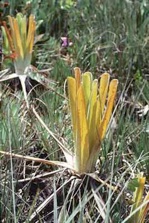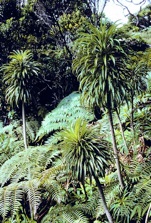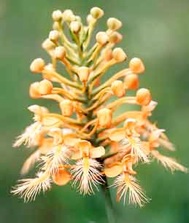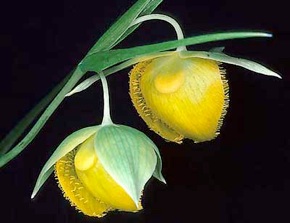Thomas J. Givnish
Henry Allan Gleason Professor of Botany and Environmental Studies
Ph.D. (1976) Princeton University • 315 Birge Hall • 608-262-5718 • givnish@wisc.edu
Plant ecology and evolution; adaptive radiation and molecular systematics;
phylogeography; physiological ecology; landscape dynamics
Adaptive radiation - the rise of a diversity of ecological roles within a lineage - is a major research focus. My students and I use variation in DNA sequences to derive phylogenies for lineages of ecologically divergent species, and then use these family trees to reconstruct patterns of morphological evolution, ecological diversification, and geographic speciation. We study these processes on islands and tropical mountains, and in various biodiversity hotspots around the world.
Current and recent projects include studies of the pattern and tempo of adaptive divergence in the Hawaiian lobeliads, the largely South American families Bromeliaceae and Rapateaceae, the North American mariposas (Calochortus), and lilies (Lilium) worldwide. Evan Eifler is studying phylogenomics, historical biogeography, and drivers of net species diversification in Geissorhiza (Iridaceae), one of the largest genera restricted to the Cape Floristic Province in South Africa. Patty Chan is studying phylogenomics, historical biogeography, and speciation at small spatial scales in Darwinia (Myrtaceae) in Western Australia. New student Bing Li is hoping to study phylogenomics, floral evolution, and biogeography in Pitcairnia from the Andes. Each of these projects includes collaborators from around the world.
A few years ago, Emily Sessa studied phylogeny and adaptive radiation in photosynthetic physiology among the woodferns (Dryopteris) of North America. Stephanie Lyon investigated the phylogeny, biogeography, and adaptive radiation of the helmet orchids (Corybas) in Australia, New Guinea, Borneo, and other parts of the southwest Pacific. My colleagues and I used phylogenomic data to reconstruct the backbone phylogeny of the orchids – the largest family of flowering plants – and using it to identify the traits and aspects of biogeographic history that appears to have driven their extraordinary diversity.
Rebecca Montgomery and I investigated the ecology and evolution of photosynthetic light adaptations in the Hawaiian lobeliads, using field studies, physiological measurements, and common-garden experiments to re-examine several classic ecological questions in a phylogenetic context and test whether the lobeliads have, in fact, undergone an adaptive radiation.
Photographs: TOP - Brocchinia hechtioides (Bromeliaceae), one of two carnivorous species in the genus with the greatest diversity of nutrient-capture mechanisms in all flowering plants; Trematolobelia kauaiensis (Lobeliaceae) growing in boggy subalpine openings on Kaua`i, representing one of the most sun-adapted lineages of the Hawaiian lobeliads; Platanthera ciliaris (Orchidaceae), pollinated by day-flying hawkmoths in a group marked by exceptional pollinator diversity; and Calochortus pulchellus (Liliaceae), a serpentine endemic limited to Mt. Diablo, and member of a genus characterized by repeated, parallel adaptive radiations in floral syndrome (fairy lantern in this case) and serpentine tolerance. Photograph of Platanthera ciliaris © 1996 Jeffrey R. Hapeman, reprinted with permission; photograph of Calochortus pulchellus © 2000 Robert M. Case, reprinted with permission.
© 2021 University of Wisconsin Department of Botany
Last updated: 27 November 2021



